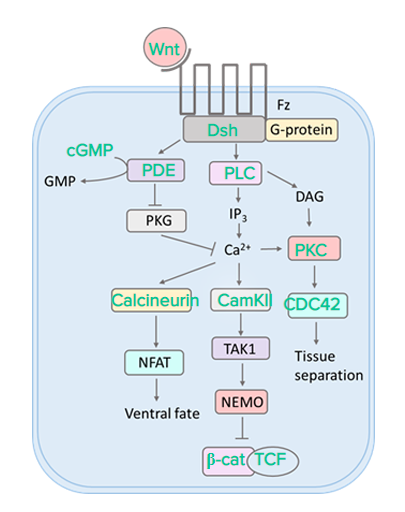Prostate cancer (PCa) is the main cause of cancer-related deaths in men. Androgen deprivation therapy (ADT) is still the standard systemic treatment, but patients always progress to metastatic castrated tolerant prostate cancer (mCRP C). Most of these tumors will react to the further treatment of androgen signaling inhibitors (ASIs), but inevitably will produce drug resistance.
Changes in androgen receptor (AR) and interaction pathway contribute to the sustained activity of AR and tumor growth in many cases, while other tumors are independent of AR, and some of them have neuroendocrine characteristics (neuroendocrine prostate cancer, NEPC). The increase of the Wnt signal is one of the mechanisms related to the progression of mCRPC and ASI resistance.
Recently, researchers from the Department of Hematology and Oncology of the Medical Department of the Medical and Cancer Center of Harvard Medical School published an article entitled “WNT5a Signaling through ROR2 Activates the Hippo Pathway to Suppress YAP1 Activity and Tumor Growth” in Cancer Res. The research results show that the Hippo pathway is activated through the WNT5a signal transduction of ROR2, which regulates the activity of YAP1/TAZ and inhibits tumor growth, ROR2 was identified as a potential biomarker to identify patients who might benefit from WNT5a-related drugs.
The nonstandard Wnt signal transduction of WNT5a has carcinogenic and tumor-inhibitory activities, but the downstream pathway that mediates these specific effects still needs to be fully established. In a subset of prostate cancer organ-like culture and xenotransplantation models, Wnt synthesis inhibited stimulated growth, while WNT5a or WNT5a-mimetic peptide (Foxy5) significantly inhibited tumor growth.
WNT5a leads to a decrease in the ROR2 dependence of YAP1 activity, which is related to the increased phosphorylation of MST1/2, LATS1, MOB1, and YAP1, indicating that the Hippo pathway is activated. Deleting MST1/2 canceled the WNT5a response. WNT5a similarly activated Hippo in melanoma cells expressing ROR2, while WNT5a inhibited Hippo in ROR2-negative cells. This inhibition is related to the increased inhibitory phosphorylation of NF2/Merlin that was not observed in cells expressing ROR2.
WNT5a also increased the mRNA encoding components of Hippo pathway (including MST1 and MST2) and was positively correlated with these components in the prostate cancer clinical data set. On the contrary, the expression of ROR2 and WNT5a was stimulated by YAP1 and correlated with the increase of YAP1 activity in the clinical data set, indicating that WNT5a/ROR2 negative feedback loop regulated YAP1 activity.
To sum up, these findings confirm that activation of Hippo pathway is the mechanism of WNT5a tumor inhibition, and indicate that the expression of ROR2 may be a predictive biomarker of WNT5a simulated drug response.
Related Services
Protein Phosphorylation Site Identification and Mapping Service
Reference
Keshan Wang et al. WNT5a Signaling through ROR2 Activates the Hippo Pathway to Suppress YAP1 Activity and Tumor Growth. Cancer Res. 2023 Jan 9;CAN-22-3003.doi: 10.1158/0008-5472.CAN-22-3003.